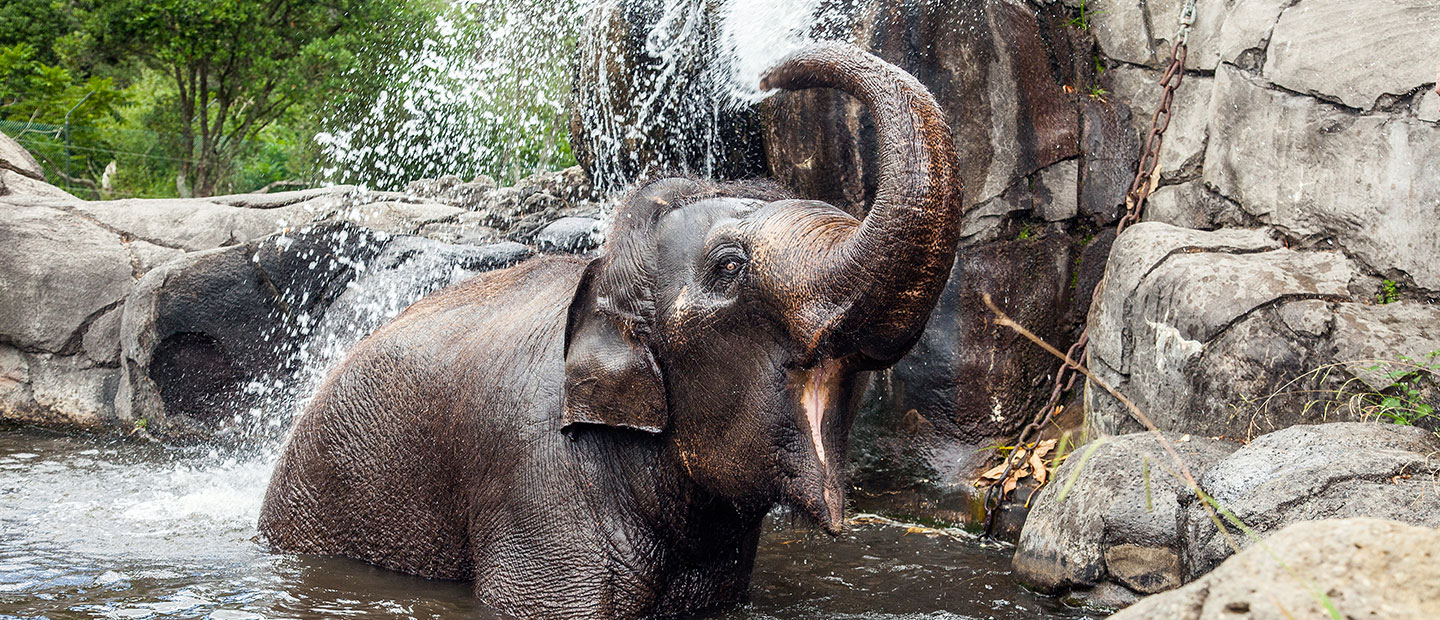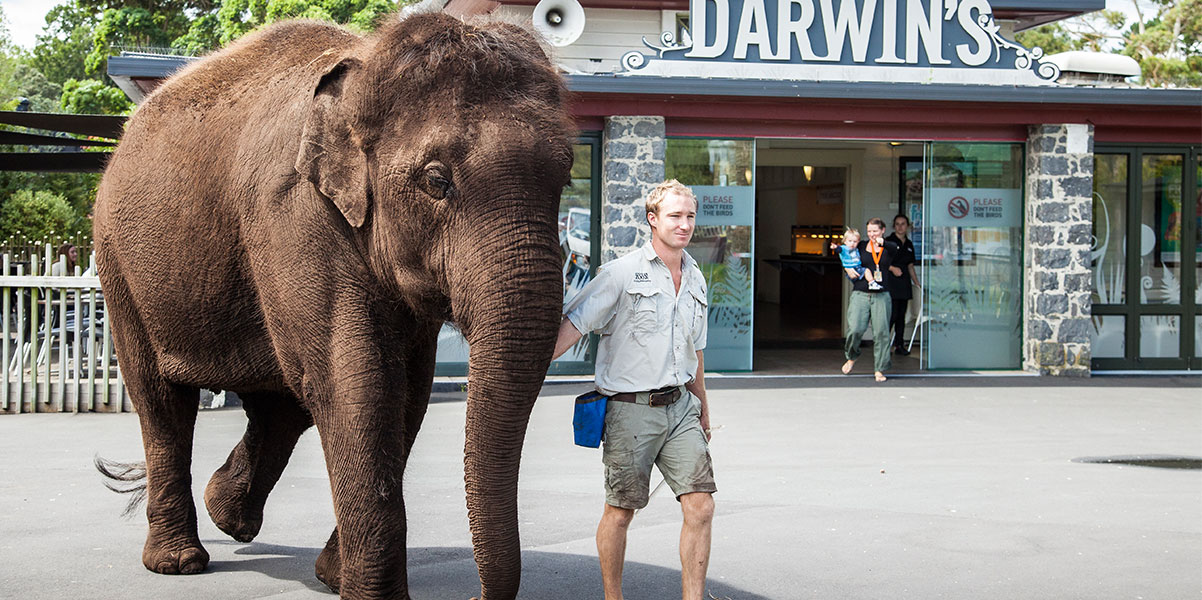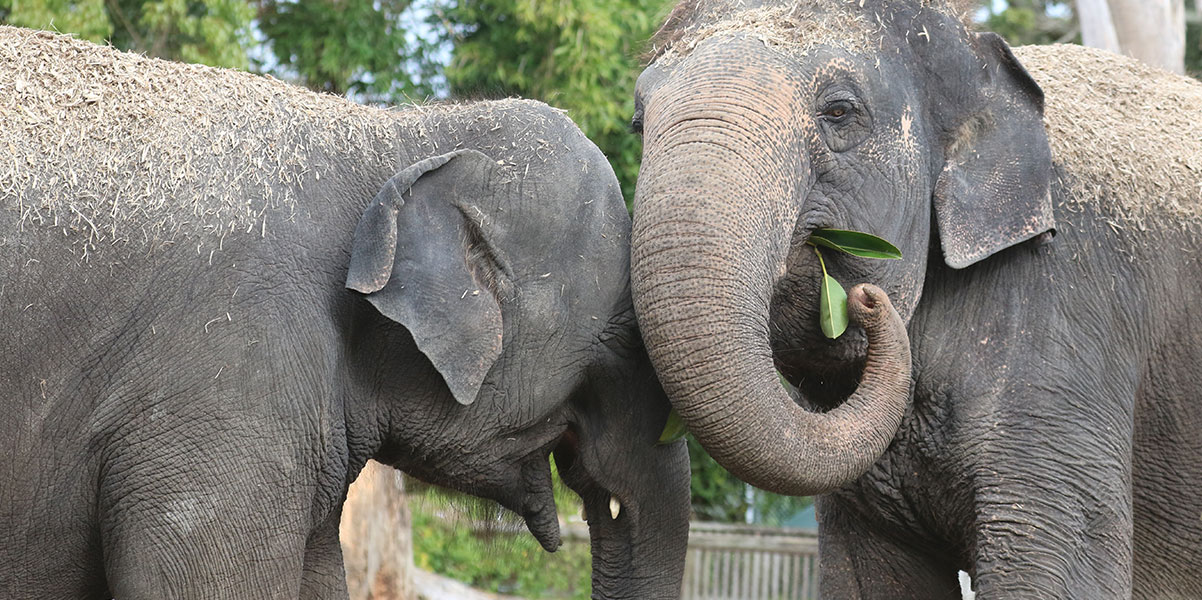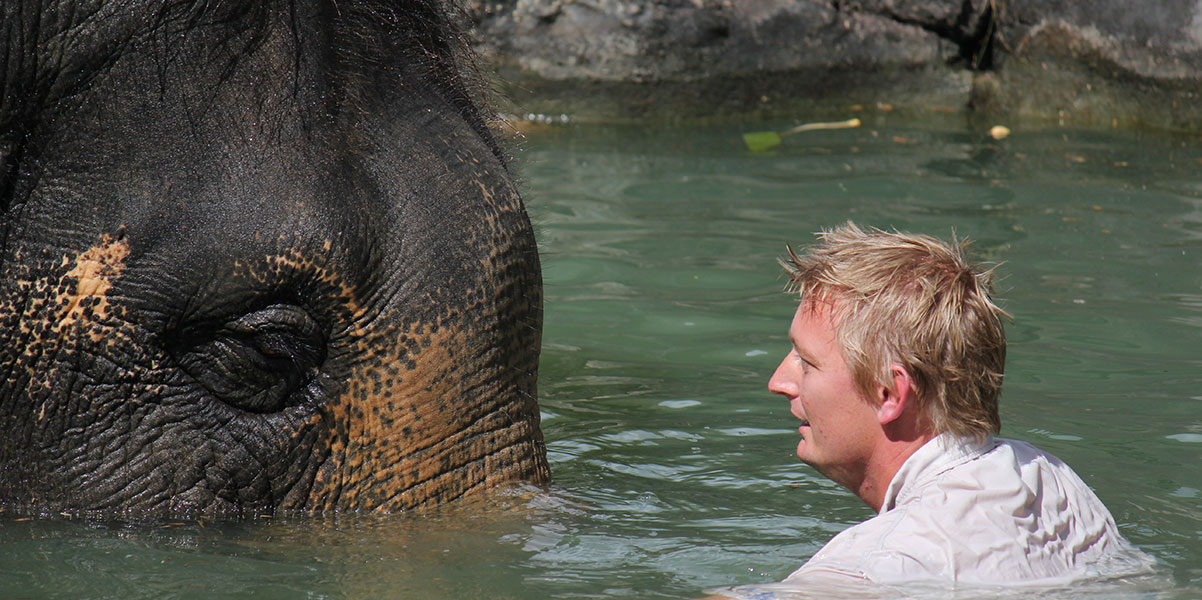Elephants are the world's largest land mammal, but the Asian elephant is slightly smaller than its African cousin.
Elephant ears radiate heat to help keep these large animals cool, but sometimes that isn't enough. Elephants are fond of water and enjoy showering by sucking water into their trunks and spraying it all over themselves.
An elephant's trunk is actually a long nose with many functions. It is used for smelling, breathing, trumpeting, drinking, and also for grabbing things -especially a potential meal. The trunk alone contains about 100,000 different muscles. Asian elephants have a finger-like feature on the end of their trunk that they can use to grab small items. (African elephants have two.)
Wild habitat is diminishing and wild elephant populations are increasingly coming into conflict with people with disastrous results.






